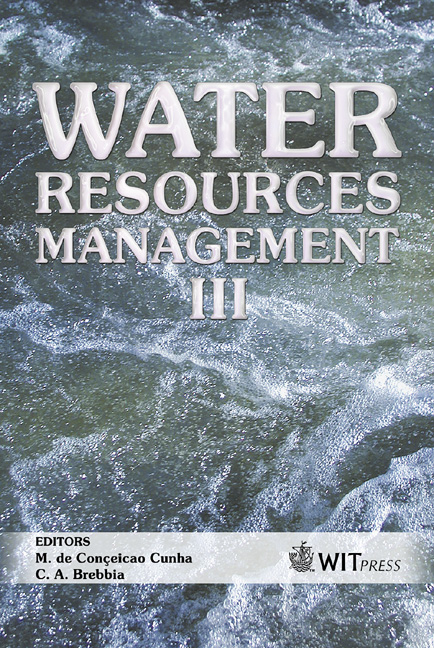Crop Water Requirement And Availability In The Lower Chenab Canal System In Pakistan
Price
Free (open access)
Transaction
Volume
80
Pages
10
Published
2005
Size
466 kb
Paper DOI
10.2495/WRM050541
Copyright
WIT Press
Author(s)
A. S. Shakir & M. M. Qureshi
Abstract
Lower Chenab Canal (LCC) is a perennial canal and conveys water to the fields through a network of branch canals, distributaries, minors and watercourses. The review of water supplies indicates a larger variation of discharges during the year and from year to year. The crop water requirement for the cultivable area of Lower Chenab Canal system is estimated using the state-of-the-art approaches. The approaches used for the estimation of reference evapotranspiration are reviewed. The review indicates that the Penman Monteith method is more suitable and provides reliable results compared to other methods. Other methods were also used but they seem to be less reliable in the light of previous investigations in this region. The mean monthly reference evapotranspiration is estimated using meteorological data of two stations (Faisalabad and Shorkot, the only reliable data collecting centres in the area), using the Penman-Monteith equation. The average annual reference evapotranspiration of the Lower Chenab Canal system for the period 1951-2002 is estimated to be 1400-1500 mm. The estimated values are maximum in June (203 mm) and minimum in December (43 mm) during this period. The area has an annual cycle of two main seasons named as Rabi (from mid October to mid April) and Kharif (from mid April to mid October). The average rainfall for the period 1998-2002 is 200 mm with a maximum of 457 mm during year 2001. The estimated values of the consumptive use for Kharif crops are 300mm to 1450mm and for Rabi crops are 250 mm to 400mm. The actual canal irrigation water supplied (11 years average) for the LCC command area in Kharif season is about 5 BCM for a cultivated area of 0.9 million hectors and 4 BCM for Rabi crops for a cultivated area of 0.8 million hectors. These estimates are based on the data available with the Punjab Irrigation Department. The comparison of actual crop water requirement and water supplied indicates a shortage of more than 60% in Kharif and about 17% for Rabi crops. The study brings out that command area of the LCC System is under severe water shortage and is causing damaging effects on the irrigated agriculture. There is a need to enhance the water allocations for the area within the available water resources of the province. The better management and water conservation strategies can further decrease the gap between demand and supply. Keywords: reference evapotranspiration, Penman Monteith, crop coefficient, consumptive use, Lower Chenab Canal.
Keywords
reference evapotranspiration, Penman Monteith, crop coefficient, consumptive use, Lower Chenab Canal.





